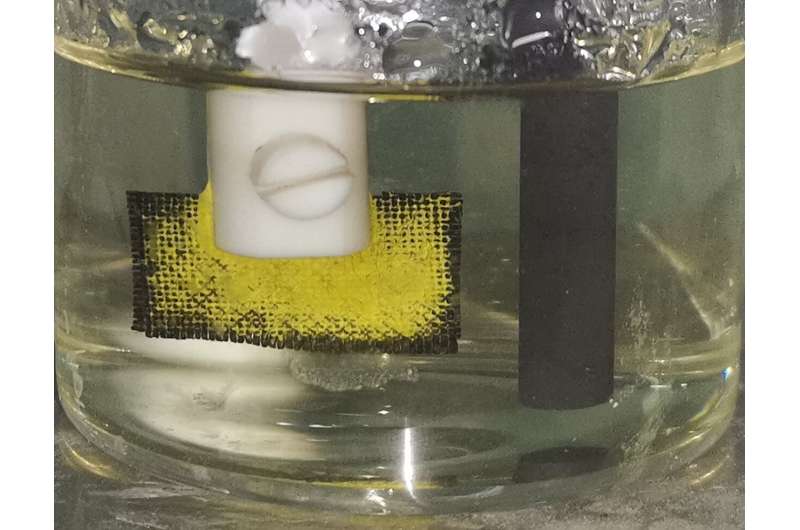This article has been reviewed according to Science X's editorial process and policies. Editors have highlighted the following attributes while ensuring the content's credibility:
fact-checked
peer-reviewed publication
trusted source
proofread
Extracting uranium from seawater as another source of nuclear fuel

Oceans cover most of Earth's surface and support a staggering number of lifeforms, but they're also home to a dilute population of uranium ions. And—if we can get these particular ions out of the water—they could be a sustainable fuel source to generate nuclear power.
Researchers publishing in ACS Central Science have now developed a material to use with electrochemical extraction that attracts hard-to-get uranium ions from seawater more efficiently than existing methods.
Nuclear power reactors release the energy naturally stored inside of an atom and turn it into heat and electricity by literally breaking the atom apart—a process known as fission. Uranium has become the favored element for this process as all its forms are unstable and radioactive, making it easy to split.
Currently, this metal is extracted from rocks, but uranium ore deposits are finite. Yet, the Nuclear Energy Agency estimates that 4.5 billion tons of uranium are floating around in our oceans as dissolved uranyl ions. This reserve is over 1,000 times more than what's on land.
Extracting these ions has proven to be challenging, though, as the materials for doing so don't have enough surface area to trap ions effectively. So, Rui Zhao, Guangshan Zhu and colleagues wanted to develop an electrode material with lots of microscopic nooks and crannies that could be used in the electrochemical capture of uranium ions from seawater.
To create their electrodes, the team began with flexible cloth woven from carbon fibers. They coated the cloth with two specialized monomers that were then polymerized. Next, they treated the cloth with hydroxylamine hydrochloride to add amidoxime groups to the polymers. The natural, porous structure of the cloth created many tiny pockets for the amidoxime to nestle in and easily trap the uranyl ions.
In experiments, the researchers placed the coated cloth as a cathode in either naturally sourced or uranium-spiked seawater, added a graphite anode and ran a cyclic current between the electrodes. Over time, bright yellow, uranium-based precipitates accumulated on the cathode cloth.
In the tests using seawater collected from the Bohai Sea, the electrodes extracted 12.6 milligrams of uranium per gram of water over 24 days. The coated material's capacity was higher than most of the other uranium-extracting materials tested by the team. Additionally, using electrochemistry to trap the ions was around three times faster than simply allowing them to naturally accumulate on the cloths.
The researchers say that this work offers an effective method to capture uranium from seawater, which could open up the oceans as new suppliers of nuclear fuel.
More information: Self-standing Porous Aromatic Framework Electrodes for Efficient Electrochemical Uranium Extraction, ACS Central Science (2023). DOI: 10.1021/acscentsci.3c01291



















